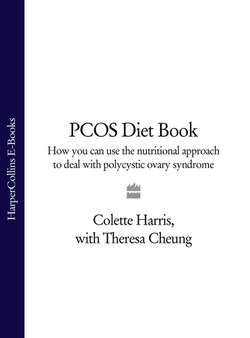Читать книгу PCOS Diet Book: How you can use the nutritional approach to deal with polycystic ovary syndrome - Theresa Cheung - Страница 40
How?
ОглавлениеYou can get fibre in wholegrain cereals, nuts, seeds, fruits and vegetables or fibre supplements.
Only 30 to 50 g is needed; a diet rich in plant fibre easily supplies this. Drink plenty of fluid for the fibre to absorb to help it pass through your digestive system.
Fibre comes in two major sources, both essential for women with PCOS: soluble fibre, like oatmeal, dissolves in water and becomes soft and gel-like. This type of fibre slows down glucose absorption after a meal, keeping blood-sugar on an even keel. Soluble fibre also helps lower cholesterol. Insoluble fibre, like vegetables and bran, is dense and chewy, does not absorb water and stimulates movements in the intestines, thus preventing constipation. Insoluble fibre helps prevent diabetes, colon cancer and heart disease.
Research supports the idea of eating a high-fibre diet, especially for people with blood-sugar problems. Dr James Anderson at the University of Kentucky showed that diabetes control is greatly enhanced by eating a high-fibre diet. People with Type II diabetes in his study ate a diet composed of wholegrain cereal, vegetables and legumes in which not more than 25 per cent of the daily intake came from fat and 60 per cent came from carbohydrates. They also ate 50 g of fibre a day. After only a few weeks on the diet many people experienced better glucose control and were able to cut back on their medication.
Pectin, a type of fibre found in fruit and some vegetables, like carrots, along with fibre from legumes (such as beans and peas), oatmeal and barley, lowered the blood glucose response and insulin drive after a carbohydrate-rich meal. A study in the medical journal the Lancet showed that people with Type II diabetes who ate a cup and a half of legumes a day for six weeks had a 15 per cent reduction in fasting blood-glucose levels, as well as a 15 per cent reduction in their serum cholesterol levels.
Another reason to make fibre-rich fruits and vegetables and wholegrains the foundation stones of your diet: you get your healthy low-GI complex carbs and fibre all in one go.
If you aren’t used to a high-fibre diet, you need to introduce more fibre slowly to give your bowels time to adapt. Don’t be surprised if your stools look bulkier the more fibre you eat.
After two years of skipping periods, starting to get excess facial hair and being so overweight, I decided I had to go to the doctor. She saw my facial hair and I told her I didn’t have periods any more and she said she thought I may have PCOS. I was like ‘Huh?!?’ She told me I was insulin resistant and sent me to a diabetes centre to learn about diet. Basic stuff really about eating little and often, making sure you get all your nutrients, increasing your fibre intake and watching that you don’t eat foods which trigger blood-sugar problems. I made some changes to my diet and started a gentle walking programme. The first week or so I nearly gave up. I thought something was wrong. I needed the restroom several times a day, but the dietician told me that this was just my digestive system adjusting and it would clear up soon. She was right. It did.
When I went back to the doctor after 6 weeks I knew I had lost some weight and I was feeling better, but I never suspected how good the news would be. In 6 weeks I had lost 35 pounds! And six months later not only had I continued to lose weight, reaching my target weight, but my periods had returned. Today I’m doing fine. I still get the occasional blip if I don’t take care of myself, but I know what to do. I sometimes feel sorry for myself that I have to be so disciplined, but then I remind myself of how good it feels to be healthy and not be ashamed of the way I look.
Linda, 39
